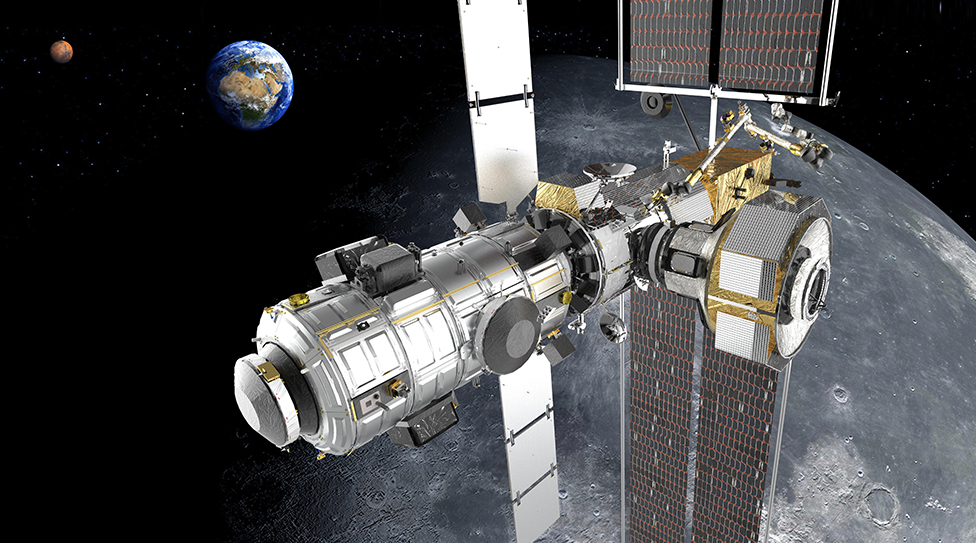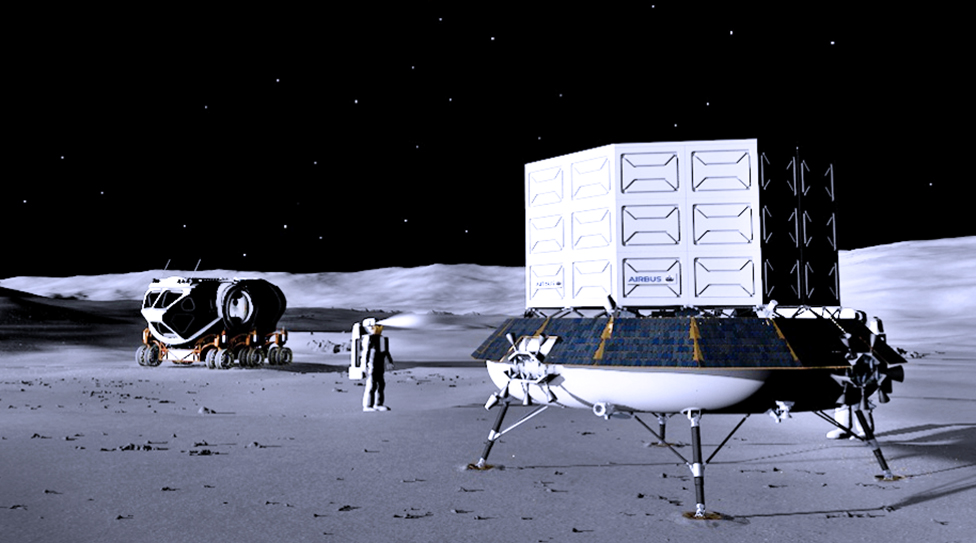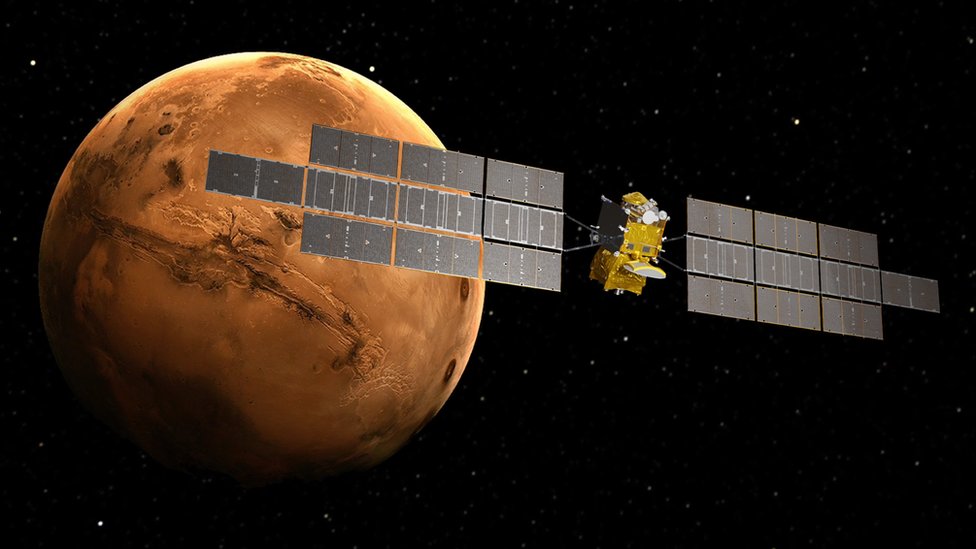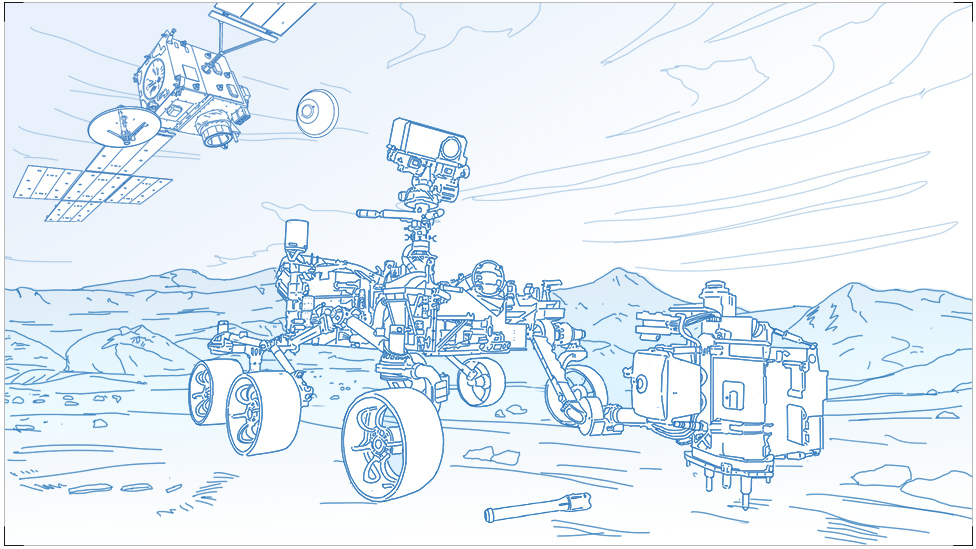
image copyrightTAS
Thales Alenia Space in Italy will produce Europe’s two major contributions to the Lunar Gateway, a US-led space station around the Moon.
TAS will build two pressurised sections: one where astronauts can live, and the other on which refuelling and telecoms equipment can be mounted.
The UK-arm of TAS will provide the refuelling hardware.
The Gateway is intended as a staging post for astronauts as they shuttle back and forth to the Moon’s surface.
At 40 tonnes, the station is a key part of the American space agency Nasa’s Artemis project, which is targeting a human return to the lunar environment 50 years after Apollo.
The first landing is envisaged for 2024, although it will be later in the decade before all the sections of the Gateway are in place.
TAS’s iHab and Esprit modules will most likely be launched on separate Falcon Heavy rockets from Kennedy Space Center in Florida.
The company’s Turin factory has a proud history in developing pressurised space compartments.
It built half the habitable volume of the International Space Station (ISS); it makes the cargo section of the space station’s Cygnus freighter; it’s part of the Dynetics team developing a crewed lunar lander concept for Nasa; and is working with the private outfit Axiom on a commercial space station.
Walter Cugno, vice president of science and exploration at TAS, said the company would lean heavily on its heritage when producing iHab and Esprit.
“They are different from the space station modules in that they will not be occupied all the time. This means they will have to have much more autonomy,” he told BBC News.
The company has just signed a first tranche contract with the European Space Agency (Esa) of €36m (£32m) to begin work on iHab (the eventual, full contract will be worth €327m/£295m); and has an Authorisation To Proceed for Esprit. An ATP allows work to get under way while final contractual details are still worked out.

image copyrightAIRBUS
iHab will have room for four astronauts to comfortably move around. It will require all the additional equipment needed for life support, and carry protection against micrometeorite impacts – and the increased radiation that exists when moving away from Earth.
Esprit comes in two parts. One is named HLCS (Halo Lunar Communication System) and provides the communications between the Gateway and the Moon.
This part will actually launch in 2024 with the Americans’ Halo module, the first habitation and logistics element of the Gateway.
The other Esprit part is ERM (Esprit Refuelling Module). This combines the refuelling hardware of the Gateway with a small pressurised tunnel with windows. They won’t be as big but these windows will be like those on the International Space Station’s Cupola module.
The windows will be where astronauts go to get a good view of space, the Earth, the Moon – and, most importantly, any robotic operations in the vicinity of the Gateway.
The iHab and Esprit announcements were timed to coincide with the annual International Astronautical Congress, which this year is being held online because of the Covid-19 crisis.

image copyrightAIRBUS
Other important announcements on Wednesday included contracts from Esa to study the design of a large lunar logistics vehicle. This is a robotic freighter the agency would use to take 1.5 tonnes of cargo to the Moon’s surface. It’s another European contribution to the Artemis project.
TAS will examine one possible design; Airbus will put forward its own concept.
The freighter, currently known as the European Large Logistic Lander (EL3), would be launched by Ariane rockets, starting at the back end of the 2020s.
Also announced on Wednesday was the formal contract for the satellite that will be used to bring rock samples back from Mars. This spacecraft is known as the Earth Return Orbiter (ERO).
Getting rocks home for analysis in sophisticated laboratories is a multi-stage, multi-mission ambition of Nasa and Esa that starts with the Americans’ Perseverance rover presently en route to Mars.
Esa has awarded Airbus a €491m (£444) contract to build ERO.
The orbiter is something of a colossus. To be launched on an Ariane rocket in 2026, it will be six tonnes in mass and be equipped with solar arrays that span of over 40m and provide a sunlight-collecting area of 144 sq m. This will make the arrays among the largest ever flown.
Esa has described ERO as .


How will Nasa and Esa bring rocks from Mars to Earth?

[email protected] and follow me on Twitter: @BBCAmos
Read MoreFeedzy


